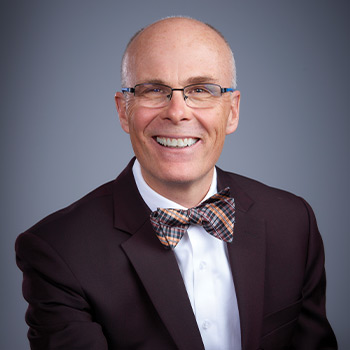In one of the most dramatic moments in the global financial crisis, former Federal Reserve chairman Alan Greenspan testified before Congress in October 2008, just weeks after the collapse of Lehman Brothers spread fear and panic around the world.
Rep. Henry Waxman (D-Calif.) bluntly asked him, “Were you wrong?”
“Partially,” replied the humbled Greenspan, who once sat at the commanding heights of the world’s economy.
“Yes, I found a flaw..., [a] flaw in the model that I perceived is the critical functioning structure that defines how the world works, so to speak.”
“That's precisely the reason I was shocked,” he continued, “because I had been going for 40 years or more with very considerable evidence that it was working exceptionally well.”
More than three decades earlier, when Greenspan had been sworn in as chairman of President Gerald R. Ford’s Council of Economic Advisers, Ayn Rand herself witnessed the ceremony in the Oval Office with her husband, Frank O’Connor, and Greenspan’s mother.
Rand brushed aside concerns Greenspan was “selling out” her anti-statist principles by taking such a high government position.
“Alan is my disciple,” she declared. “He’s my man in Washington.”
Somewhere, the Matriarch of Objectivism must be spinning in her grave.
Almost since his retirement as Fed chairman in 2006, Greenspan has faced intense criticism that his actions helped cause the worst financial crisis since the 1930s.
And his own longstanding ties to Ayn Rand have stirred new controversy over what role her ideas might have played in the crisis, showing ironically how important a thinker she remains, nearly three decades after her death.
Greenspan’s involvement with Objectivism dated back to the mid-1940s, when he was enthralled by Rand’s novel, The Fountainhead. He later became a regular at her Saturday night soirees in Manhattan and even sat in on Rand’s readings of chapters from the still-unpublished Atlas Shrugged.
Rand dubbed Greenspan “the undertaker” for his dark clothes and somber mien. And he remained aloof, harboring skepticism about her philosophy for quite a while.
She had doubts about him, too. “Rand worried that Greenspan was an opportunist or social climber,” wrote Jerome Tuccille in his 2002 biography, Alan Shrugged. But as a successful businessman (he co-founded his economic consulting firm in the 1950s), “Alan was their only link to the real world outside Ayn Rand’s living room—outside their own imagination,” Tuccille observed. It turned out to be a Faustian bargain.
In his 2007 autobiography, The Age of Turbulence, Greenspan called Rand “a stabilizing force in my life...She introduced me to a vast realm from which I’d shut myself off.”
He showed his loyalty when he and three other prominent Objectivists signed an open letter endorsing the expulsion of Nathaniel Branden and his wife Barbara from the group in 1968. (Branden had been the much older Rand’s lover years before, but was excommunicated after she learned of his extramarital affair with another woman.)
Greenspan also spelled out his evolving thoughts on free markets and the economy in several articles he wrote in the 1960s (three of which are reprinted in Rand’s book, Capitalism: The Unknown Ideal).
One is particularly relevant: “The Assault on Integrity,” which condemns any regulation or investor or consumer protection because, Greenspan argues, the government cannot do as effective a job in policing business as the free market can.
“It is precisely the ‘greed’ of the businessman or, more appropriately, his profit seeking which is the unexpected protector of the consumer,” he wrote. “It is in the self-interest of every businessman to have a reputation for integrity and a quality product.”
“A company cannot afford to risk its years of investment by letting down its standards of quality for one moment or one inferior product; nor would it be tempted by any potential ‘quick killing,’” he asserted.
Hello, Goldman Sachs (NYSE: GS). Are you listening, BP (NYSE: BP)?
Next: Rand’s ideas and Greenspan’s actions
|pagebreak|How much did the naïve sentiments expressed in that article color Greenspan’s decisions as Fed chairman?
I wanted to ask him, but Greenspan declined to be interviewed for this column. Still, his actions speak for themselves.
Greenspan’s Fed looked the other way while essentially unregulated mortgage brokers churned out bad loans to dreamers, deadbeats, and suckers during the housing boom. No “quick killing” for them!
And in the late 1990s, the head of the Commodities Futures Trading Commission, Brooksley Born, warned of the growing danger of derivatives and pushed for more oversight of derivatives trading.
But Greenspan, along with Treasury Secretary Bob Rubin and his deputy Lawrence Summers, played hardball on Capitol Hill and shut Born down. The whole shameful story is laid out in a PBS Frontline documentary, “The Warning.”
Born, a prominent Washington attorney, told Stanford magazine about her first lunch with Greenspan in 1996.
“Well, Brooksley, I guess you and I will never agree about fraud,” she remembered him saying. “You probably will always believe there should be laws against fraud, and I don’t think there is any need for a law against fraud.”
Greenspan, Born said, believed the market would take care of itself.
The Fed chairman’s hands-off stance helped the housing bubble morph into a full-blown financial crisis when hundreds of billions of dollars’ worth of collateralized debt obligations, credit default swaps, and other unregulated derivatives—backed by subprime mortgages and other dubious instruments—went up in smoke.
Highly leveraged banks that bet on those vehicles soon were insolvent, too, and the Fed, the US Treasury and, of course, taxpayers had to foot the bill. We’re still paying.
But this was not just a case of unregulated markets run amok. Government policies clearly made things much worse—and here, too, Greenspan was the culprit.
The Fed’s manipulation of interest rates in the middle of the last decade laid the groundwork for the most fevered stage of the housing bubble. To this day, Greenspan, using heavy-duty statistical analysis, disputes the role his super-low federal funds rate played in encouraging risky behavior in housing and capital markets.
But in his book, Bailout Nation, commentator Barry Ritholtz persuasively pointed out that the rock-bottom short-term rates engineered by Greenspan were unprecedented and they remained low for longer than they ever had before, stoking the flames of speculative fever. Meanwhile, Greenspan kept denying there was a housing bubble at all.
So, we had too little regulation where it was needed and too much government interference where it wasn’t—the worst of both worlds.
I think the prominent conservative federal judge Richard A. Posner, who also teaches at the University of Chicago’s law school, summed it up best.
“Rational maximization by businessmen and consumers, all pursuing their self-interest more or less intelligently within a framework of property and contract rights, can set the stage for an economic collapse,” he wrote in his 2009 book, A Failure of Capitalism.
Although Posner believed that the Fed’s low-rate policy and failure to deflate the housing bubble in time were also major factors, he concluded:
“A profound failure of the market was abetted by governmental inaction. The movement to deregulate the financial industry went too far by exaggerating the resilience—the self-healing powers—of laissez-faire capitalism.”
Ayn Rand would no doubt have vehemently disagreed. But her most famous follower—in both the breach of her ideas and their observance—didn’t do her legacy any favors.
Howard R. Gold is executive editor of MoneyShow.com. The views expressed here are his own.
Howard will be on vacation and he will resume writing new columns in July.





















